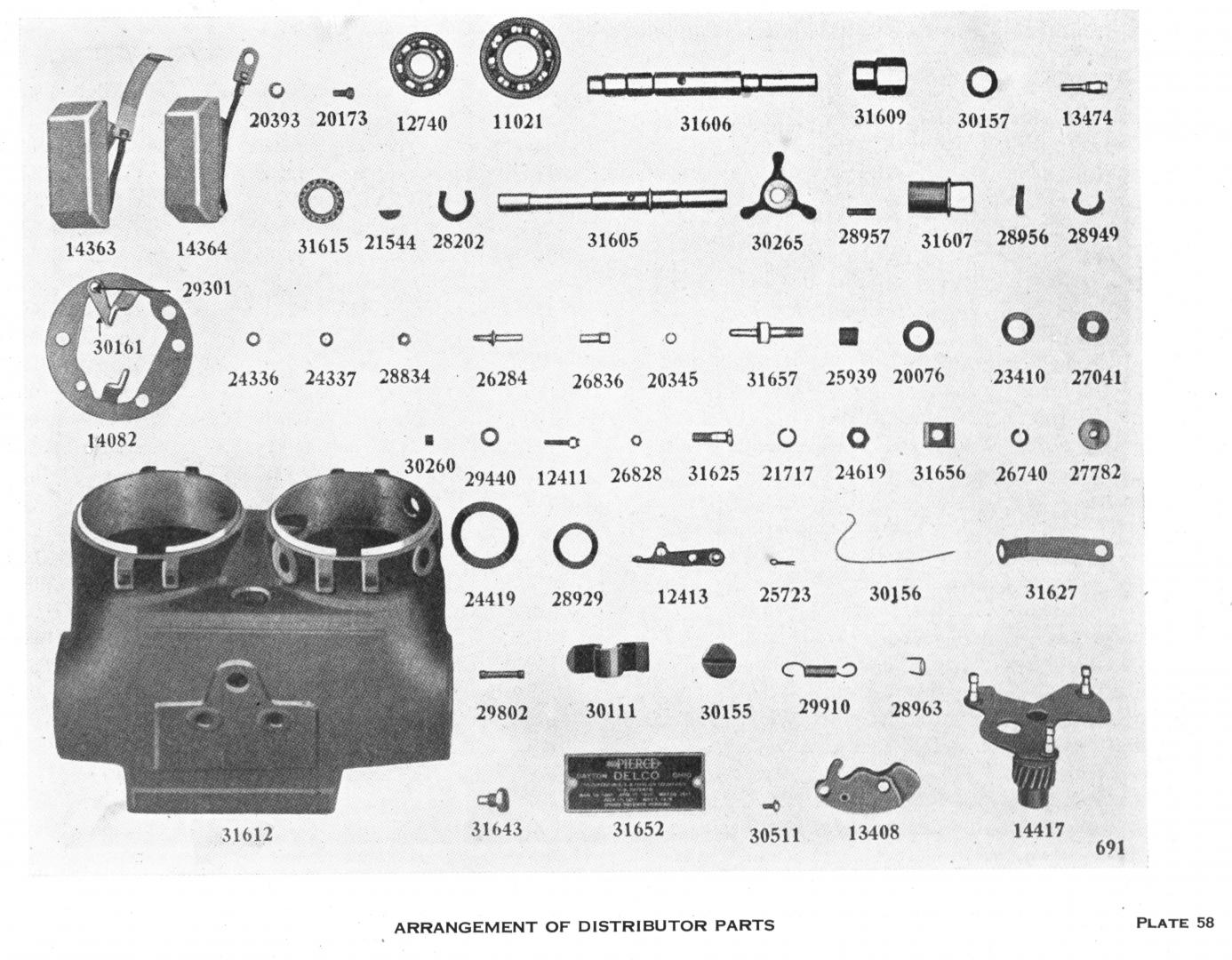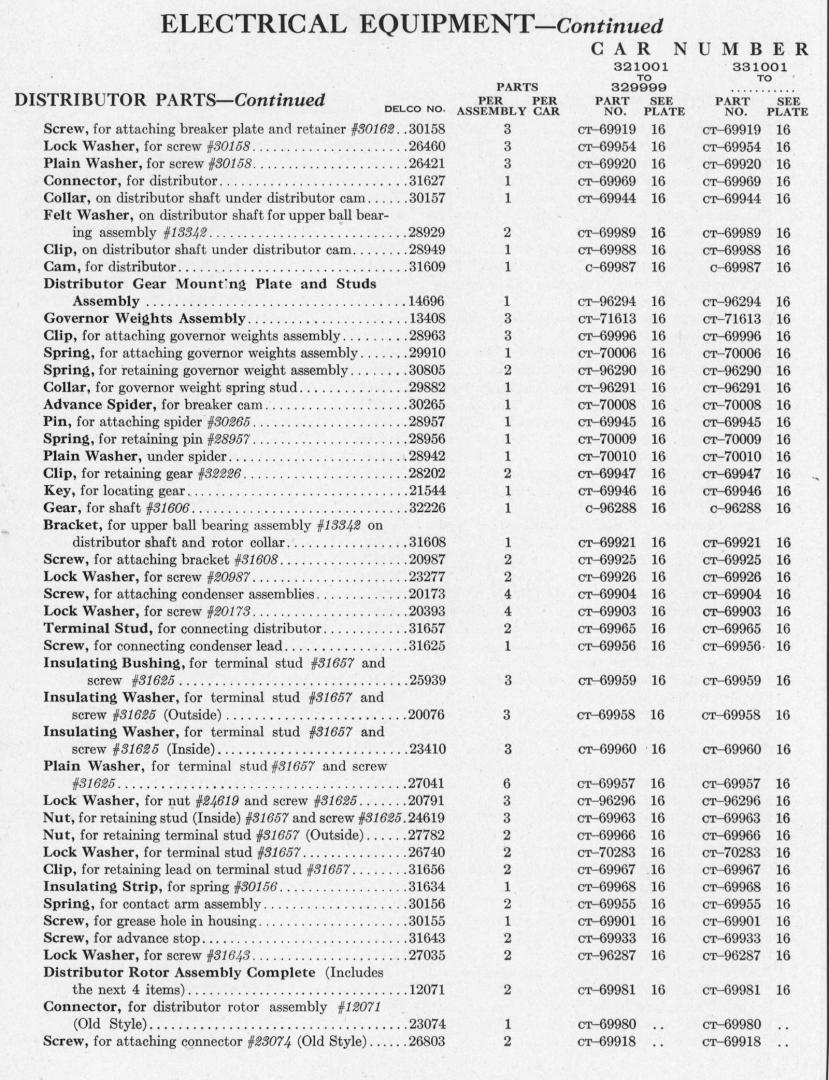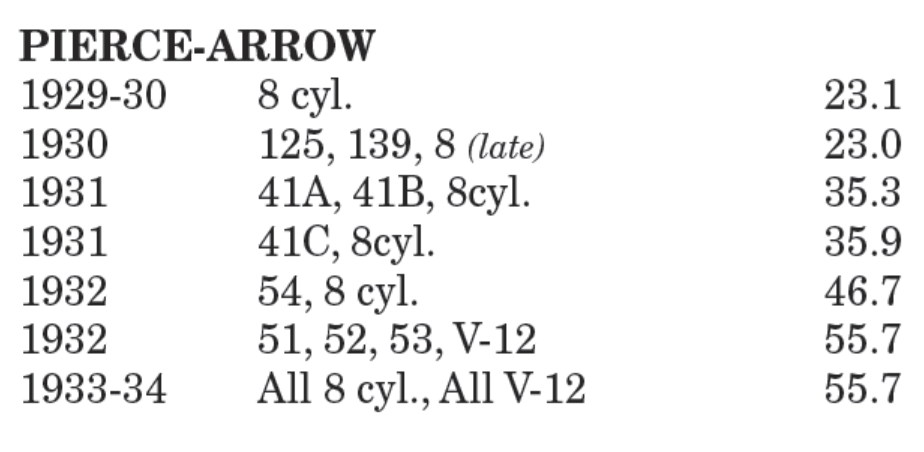- Home
- About Us
- Join/Renew
- Member Benefits
- Member Pages
- Log In
- Help
- Museum Store
James,
Do you have a Series 31/51? If so, it does not show on your record and I would like to get the information to update it.
Thanks, Dave
James,
Is this what you need?







From the Series 33 Parts Book. It does give Delco numbers. It looks like the distributor is a 5216.





I have a copy of the Series 33 parts book which would have the Pierce part numbers, but I’m not sure that would help you. Yes, the 00 grease is used in tractors and lawn mowers. There is a good article on that Distributor in PASB 85-1, downloadable under publications on the website. PASB 83-6 has some aftermarket point numbers. If the distributor has the part number tag on it, you might try calling Brillman and seeing if they can cross reference. It’s a long shot.
Hi Larry,
I can’t help you with the parts, they are where you find them. Series 33 and 36 parts are difficult to come by. Keep watching Ebay and similar sites. You might check with Brillman Co. and see if they have anything. You could also put a wanted ad in the Emporium.
As far as the grease, I have been told the closest thing to the old cup grease is the white lithium grease you get in a tube. The other kind might be grade 00 grease which is a light grease that will actually flow a little. I think 140 oil might be too thin.
Dave
In reference to Dennis’ comment about the caps being different, the ’33 Archer has a wider base than the ’32. The cap will fit either year. See photos below. Sorry I can’t help you with the parts. John Cislak may have them. Office Phone: 413/543-9017
Email: [email protected]
1932 Archer

1933 Archer

Fred,
Contact Bob Koch in Washington. He has a ’37 1703 that he restored and may be able to answer some of your questions. His contact information is in the Member Roster.
For information on the cooling system download PASB 2019-6 (Water Jackets) and 2018-6 (Rust Removal) from the website.
A common way to prevent loosened rust flakes from moving to the radiator is to use the foot section of a woman’s nylon stocking. Remove the upper radiator hose, insert the stocking, fold the stocking edge over the outside of the hose and the hose clamp over that to hold it in place.
Actually, 1927 was the first year Pierce-Arrow offered a brake booster. ’27 and ’28 were a vacuum booster. No booster ’29-32. A mechanically driven booster from 1933-35. 1936-38 again had a vacuum booster.
Frederick,
Type their name in the Comments Box. on each line in the history section. Or you can send me the prior names (and years and location if you have them), and I can get them entered. It is a little tricky. Clicking on my name on this post should give you my e-mail.
That car is going to be a lot of work but should be a great car once done.
Dave

Hi Frederick,
That car is not listed in either the PAS files or the Weis files, so it was an unknown to PAS car. The Weis files estimate 23 1702 144″ W.B. cars of all body styles were built with 7 extant (now 8). One other 1702 5 ps. sedan is shown as existing. However, elsewhere in the records it indicates it is a 7 ps. so yours may be the only 1702 5 ps. remaining. There is a 1701 5 ps. listed in PAS records.
In the two 1937 brochures I have access to, in one the Special Five Passenger Sedan is listed as a standard body, in the other it is listed in the “Custom” body group.
I am going to add this car to your PAS record. Have you checked the front frame rails for a Serial Number Plate?
Good luck on the restoration.
Dave
Chris,
A write up and photos would be great for the Service Bulletin. Our members like to read articles about what people have done to bring their cars back.
Thanks, Dave
Alan,
Here is weight and length information from the 1931 Dealer Data Book:


Alan,
Greg told me he is planning on attending the Eureka Springs meet in June. He has improved greatly, but still has a long way to go.
Dave
These guys seem to have a lot of lenses: https://oldcarlenses.com/
A web search turns up lots on Ebay and others, you’ll just have to wade through it.
Glenn,
I would be nice to see a picture of the Monogram on your car. Generally, the middle letter is the first letter of the last (Family) name, although I am sure there are exceptions depending on owner preference. First letter is the first initial and the third letter is the middle initial.
Below is a page from the 1932 Dealer Databook with Monograms.

From PASB 2024-2, flow in GPM:

Greg has moved to a rehab facility and is improving every day. He has been working on walking and has an appointment soon to see about having his back brace removed.
Bob,
If I am understanding correctly what you are looking for, there are some available for other more modern cars on the internet. Below is one example. No measurement listed so it is possible they are too small for our larger drums. You may have to make some phone calls for measurements.
Dave
Hi Kirby,
The car looks fantastic. Can’t wait to see it in Eureka Springs.
Dave
